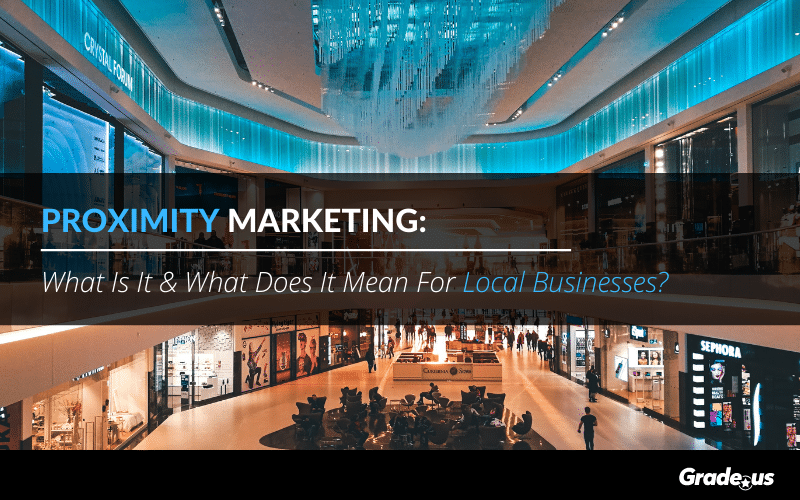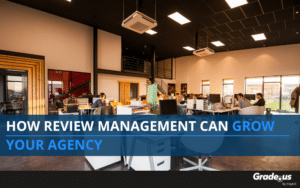You can use numerous marketing channels to attract customers to your local business or that of a client. As a business owner, or an agency supporting customer acquisition efforts for a local business, your goal is to identify and utilize the most effective marketing channel. This guide will look at how you can use proximity marketing to generate fresh leads and sales.
Proximity marketing can be particularly useful for small businesses. A location-based approach to marketing can complement your online marketing strategies. We will explore the different ways you can use proximity marketing, its benefits, and how local businesses stand to benefit. Let’s start by getting our definitions in order.
Table of Contents
Get the Reputation You Deserve with Grade.us
What is proximity marketing?
Proximity marketing allows you to run a marketing campaign for your business targeting people based on where they are located. Proximity marketing campaigns use mobile location technologies such as GPS, WiFi, and Bluetooth for targeting. For example, with Bluetooth, you could send a message to any mobile device within your target geographical area that has downloaded your app.
According to Retail Info Systems’ 2019 Annual Store Experience Study, proximity marketing is the most popular emerging marketing channel. One of the reasons for its popularity is that you can send people marketing messages to their phones while they are close to your store.
With more than half of all sales still taking place offline, proximity marketing can be a useful way to get more footfall in your store.
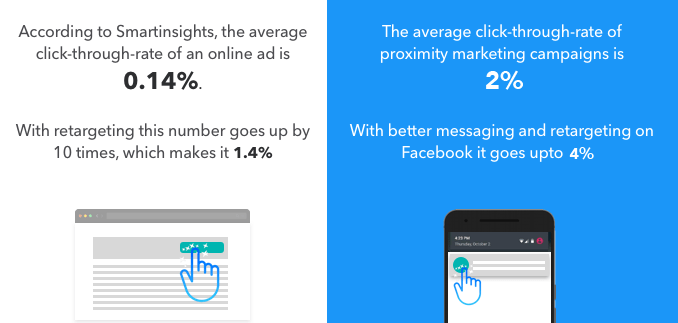
Source: Beaconstac
Proximity campaigns are effective. The average click-through rate of a campaign is 2%, which is higher than a retargeted online ad (which has an average rate of 1.4%, according to a study by Beaconstac). The reason for the high CTR is probably twofold:- It’s a relatively new marketing channel, meaning it’s not heavily used. With most marketing channels, engagement and CTR drop as use increases.
- You are providing highly targeted marketing ads to people who are close to your shop.
What are the types of proximity marketing?
Proximity marketing encompasses any marketing efforts that use technology to target people based on their location. I’ll run through the most common channels through which you might run a proximity marketing campaign in the bullet points below:
- Bluetooth. Bluetooth proximity marketing relies on beacons that send signals to mobile devices. You can notify customers who enter your store or are nearby about promotions and discounts. The beacon is a battery-operated device that you must install. The beacon will only work if the consumer has downloaded the relevant app and allowed push notifications.
- WiFi. Free WiFi is a big draw for people who are relaxing or need to do some research. For example, get the directions for a shop, or compare prices on a product. Customers like to access free WiFi at coffee shops, fast-food chains, and similar businesses. With WiFi marketing, you can display offers and promotions to users. You can also ask first-time users for their email address as they enter the store to build up your email list. Of course, you need to ask their permission to contact them with relevant promotions.
- RFID/NFC. Radio-frequency identification (RFID) and near field communication (NFC) are mobile phone technologies that use tiny transmitters on your products, transferring information to smartphones. Here are some great examples of how you can use RFID in marketing campaigns.
- GPS. You can use GPS to target consumers in a particular locality. For example, a food delivery service can send a special offer for a restaurant to people who have downloaded its app within the restaurant’s delivery radius.
You can use the technologies listed above to help you target your immediate consumer by providing relevant offers to a potential customer based on their location. It is particularly effective when people are out and about looking to buy things. For example, they are wandering around a shopping mall.
In the next section, we will look at an innovative way to use proximity marketing by using reverse geo-tagging.
Case Study: Burger King’s reverse geo-targeting
Burger King always keeps things interesting with their marketing campaigns and does not shy away from taking potshots at its closest competitor, McDonald’s. In December 2018, Burger King used a reverse geo-targeting campaign called the “Whopper Detour.”

Source: Burger King Twitter
The campaign allowed anyone within 600 feet of a McDonald’s restaurant to order a Whopper for 1 cent if they had the new Burger King app installed on their phone. The app would then give them directions to the nearest Burger King outlet to pick up their delivery. The move was also a way to promote Burger King’s new mobile app that allowed customers to order from their phones.
So, instead of geo-targeting customers to come to their store, they sent the customers to McDonald’s first. While the final verdict on this move was divided, with many experts saying the extra detour may not be worth the $4 discount on the Whopper, there is no doubt that Burger King had everyone’s attention.
We see here that proximity marketing is not just about sending promotions and discounts but can be used innovatively to engage with your target customer base. In the next section, we will look at some of the benefits of proximity marketing.
Benefits of proximity marketing
Using location-based services to target your customers allows you to provide relevant promotions to people based on their location. Proximity marketing is particularly effective in malls and large shopping areas where people are spending money. A timely reminder of a special offer could generate immediate sales. It’s a great way to connect with customers.
Let’s dive into some other benefits of proximity marketing.
1. Enable immediate conversions
With geotargeting, proximity marketing can help you target customers by giving discount prompts, giving them an incentive to buy—brands like McDonald’s use their apps to let users know that they are close to a store.
You can also help customers with product information through QR codes or with RFID to help them make informed purchasing decisions. QR is particularly useful in the service industry, where customers can scan the QR code on their table to both view and order from the menu.
By targeting consumers when they are near or in your store, you can capitalize on their intent to buy by showing them relevant offers.
2. Increase app engagement and retention
Mobile eCommerce (m-commerce) is important for any online business. An app can be a central part of a brand’s M-commerce strategy. Through an app, you can send push notifications that help incentivize customers to make a purchase.
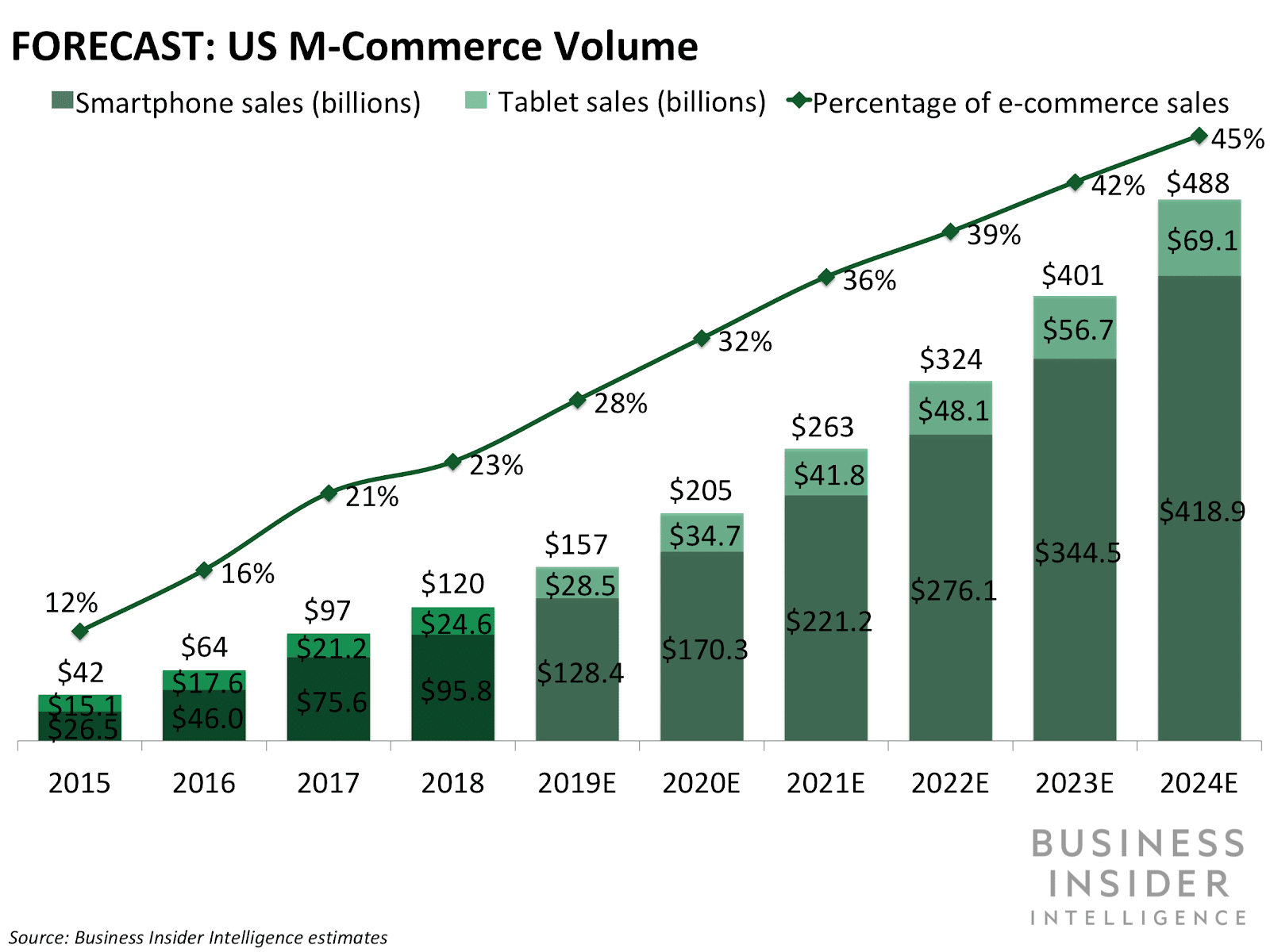
Source: Business Insider
Proximity marketing can help lift app engagement when customers see value in the app that extends to their in-store shopping experience. In some parts of its massive global franchise, McDonald’s provides exclusive app-only offers that can be redeemed when you show the cashier a coupon on your McDonald’s app.
You can also provide additional information about the products on offer in your store through an app. For example, with RFID, it’s possible to provide additional information about a product to consumers immediately. You could provide this information in the store, for example, on a screen in a clothes store’s changing rooms. However, it’s feasible to provide such information through an app.
These kinds of offers and support help you get and retain app customers. With smartphone space limited and an app available for almost everything, it is easy to get uninstalled. Offers and a superior in-store experience can help you avoid the delete bin and retain more users.
3. Geotargeting made easy
With the smartphone as your ally, you can easily target all the people with a smartphone in a given locality. Just pick a location and, whenever someone enters it, use geotargeting to send them a push notification. You can also send messages with promotional offers. You can even segment customers to send personalized messages based on their preferences and behavior.
Like we saw in Burger King’s example, there are many ways geotargeting can help you engage with customers. Proximity marketing can help you drive the all-important footfall to your store. The next section will discuss how a local business can use proximity marketing to generate revenue and how it helps them fight off competition from big-box retailers.
How does proximity marketing help local businesses?
Proximity marketing can be beneficial for local businesses looking to improve their customer acquisition efforts. Proximity marketing allows you to provide an improved in-store experience to their customers and publicize your services to potential customers in your vicinity.
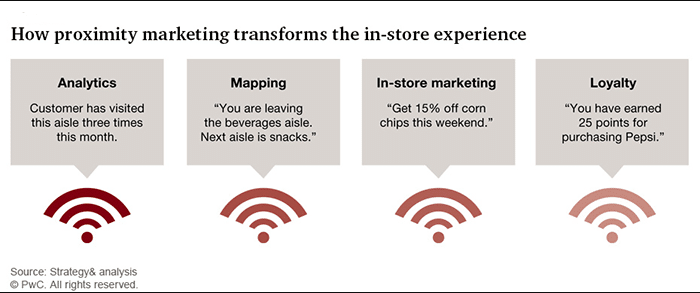
Here are a few other ways proximity marketing can be useful for local business owners:
1. Increase footfall
Many local brick and mortar store relies heavily on foot traffic. Email marketing and online promotions are proven ways to attract customers to your business. However, you don’t know where the person opening your email is based when you send the message.
With proximity marketing, you can target people who are near your store. Through proximity marketing campaigns, you can target anyone in your vicinity. More general campaigns can help boost brand awareness and attract new customers.
Meanwhile, assuming you provided a great service the first time around, campaigns that target existing customers increase customer lifetime value. That’s setting aside the potential for an improved in-store customer experience through these channels.
The goal here is to attract and retain consumers. Even if people do not purchase, you can add leads to your email list and boost your email marketing efforts, secure a new follower on social media and use that connection to cultivate your relationship and build your brand.
2. Data for better buyer personas
Proximity marketing offers additional benefits beyond making a sale. By giving you real-time data on shopping habits, you can create better buyer personas for your brand and better understand their interests. A better understanding of your customers will allow you to improve your marketing campaigns in the future
Unlike the digital trail of an interaction with an online store, there is usually very little information that a customer leaves behind when walking through your physical store. With proximity marketing technologies, you can collect data on their behaviors, preferences, length of stay, and even the offers they found engaging. All these data points will help you send out better offers and promotions.
3. Cost-effective method
While some proximity solutions require an app (which can be expensive for a local business), others are very affordable, especially when considering the potential return on investment. Technologies like beacons, WiFi, and Bluetooth support proximity marketing and are less expensive than other options. The average beacon costs about $25, while other methods have a nominal monthly fee. Beacons are also relatively easy to install and maintain.
Proximity marketing can give local businesses an edge over larger brands, thanks to local knowledge. Local business owners are well-placed to know where local customers like to shop and what time shopping areas tend to be busy. The use of local content can help these business owners leverage proximity marketing technologies to their benefit.
Using these cost-effective methods can help local businesses drive more footfall and send out personalized promotions that encourage a purchase.
The bottom line on proximity marketing
Proximity marketing can help you drive conversion by providing targeted promotions to customers, increasing app engagement, and gathering valuable customer data. Using the now-ubiquitous smartphone as your advertising tool, you can offer a superior in-store experience by providing customers with offers and information that are relevant to them.
Local businesses can particularly benefit from proximity marketing techniques that are cost-effective and help them attract new customers to their store. These techniques are easy to use, offer a value-added store experience, and help provide great deals to the customer. It’s a win-win.

